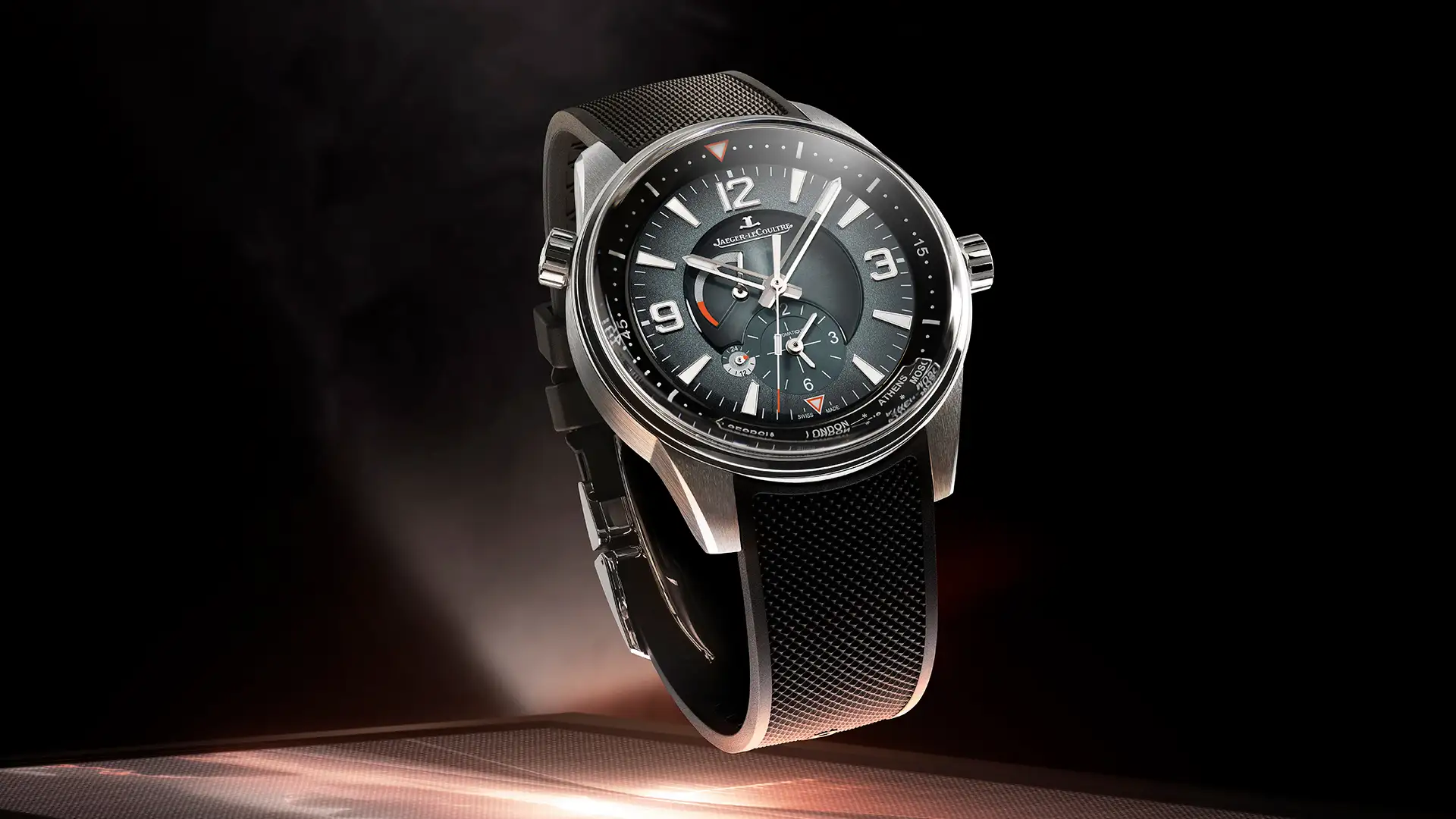Jaeger-LeCoultre introduced three new references to their Polaris collection this week, including a new watch called the Geographic, which boasts a unique take on the travel time complication. The new watches also highlight a new dial colorway called ocean gray lacquer for the collection that is also available on the time and date model. The Geographic brings a concept that currently exists in the Master Control collection into the Polaris, while nearly completely changing the personality of its execution to suit the sportier needs of the collection. The result is something quite spectacular for the Polaris, feeling a bit more natural than the formal execution seen in the Master Control.
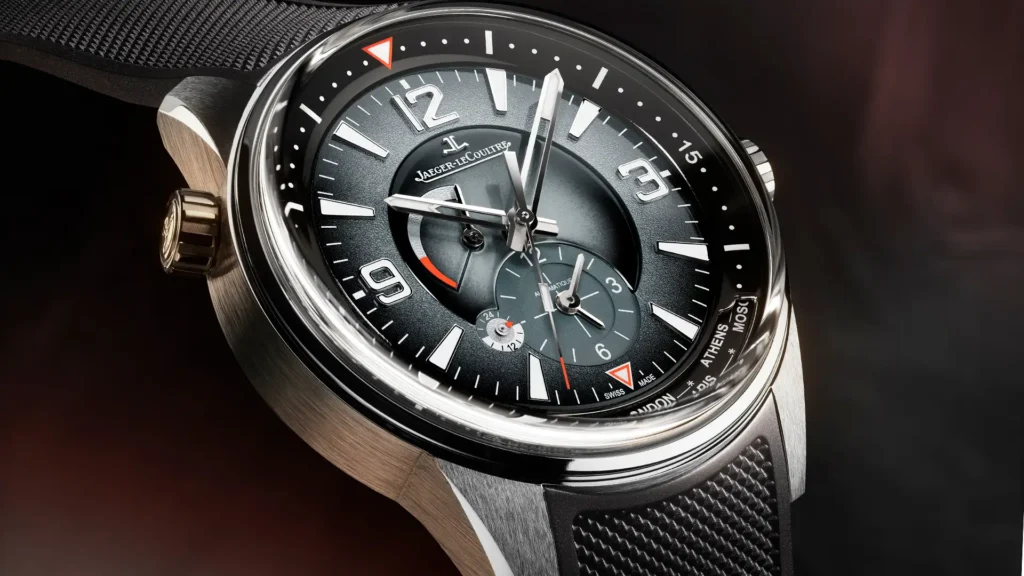
The Geographic presents a natural solution to the inherent complexity of a dual time functionality, especially when managing world time type of display in the process. A complete second dial is situated at 6 o’clock, containing its own hour and minute hand which can be adjusted via the crown at 10 ‘clock. As the time is changed relative to the home time, the city disc rotates along the bottom of the dial through an aperture that spans only the necessary distance to give the wearer context. It’s a much more manageable solution than the full city disc being visible throughout the dial.
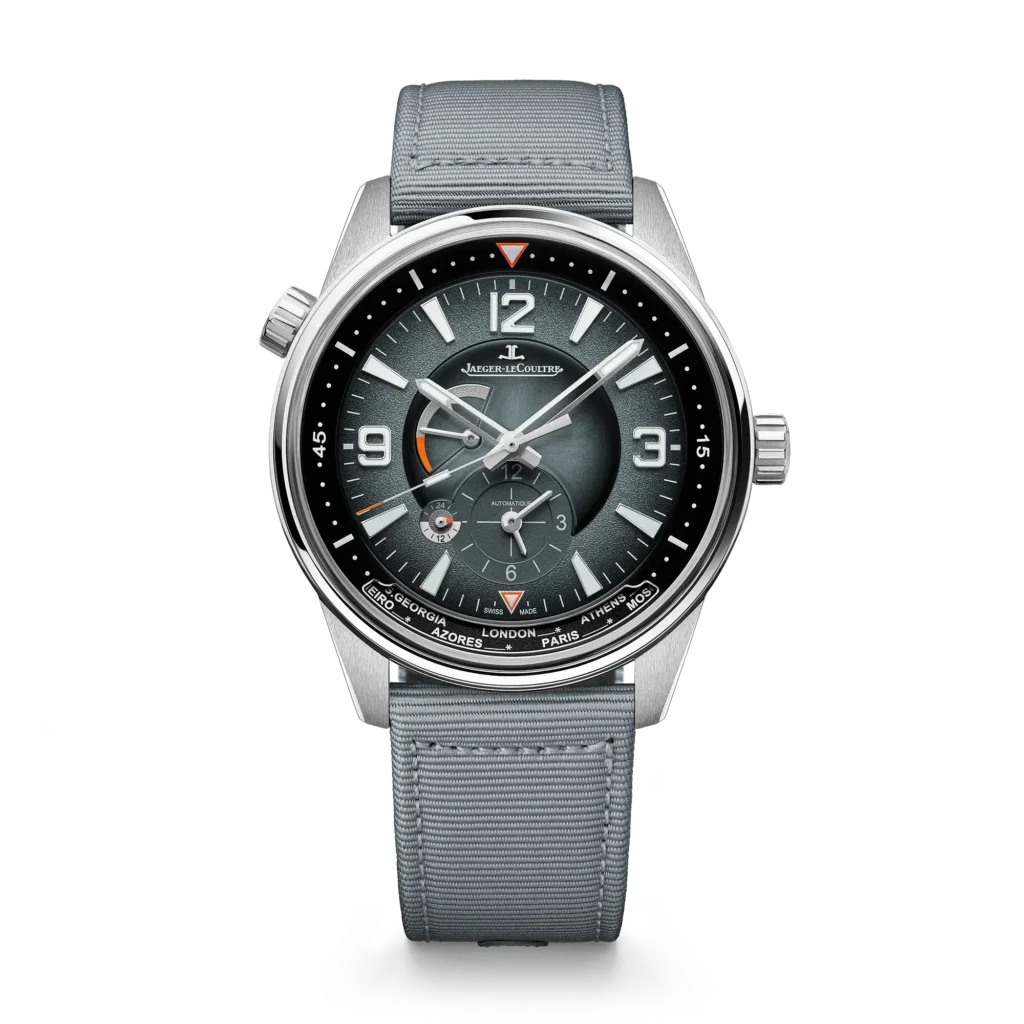
A small 24 hour display is nested just to the left of the sub dial, providing day/night information between the two time zones being tracked. This element is slaved to the second time zone to keep things straightforward. This functionality is provided by the Jaeger-LeCoultre caliber 939, which has 70 hours of reserve, and displays the status of that reserve on the dial to the left of the hand stack. Unlike the Master Control Geographic, the Polaris ditches the date to keep things a bit cleaner, and it works wonderfully here.
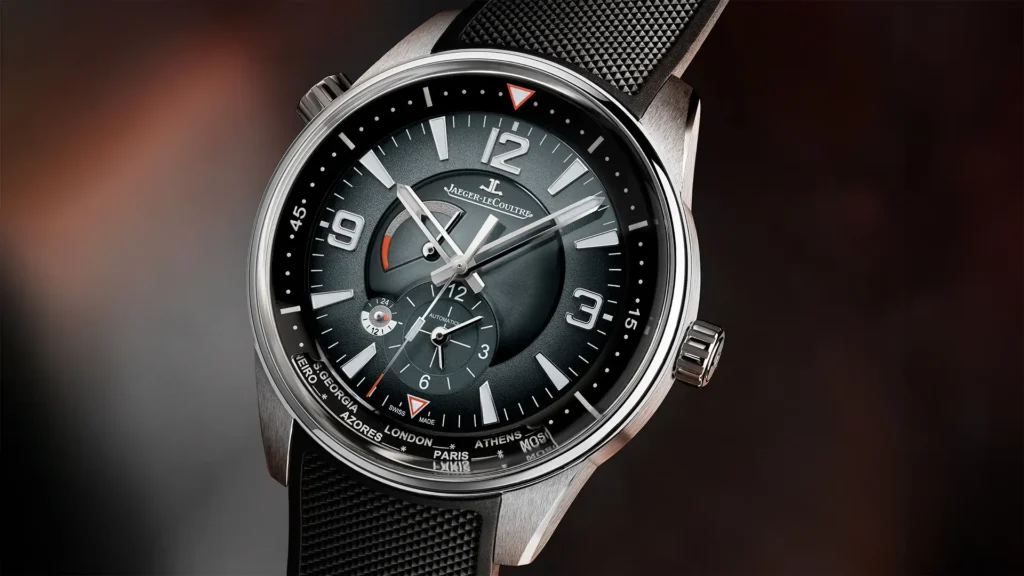
The ocean gray lacquer dial is split into two sections as we typically see in the Polaris, and it fades from light at the center to darkness at the outer edges. Orange accents work in conjunction with the complications to manage focal points, and it’s an aesthetic that works as well as anything we’ve yet seen in the modern Polaris collection.
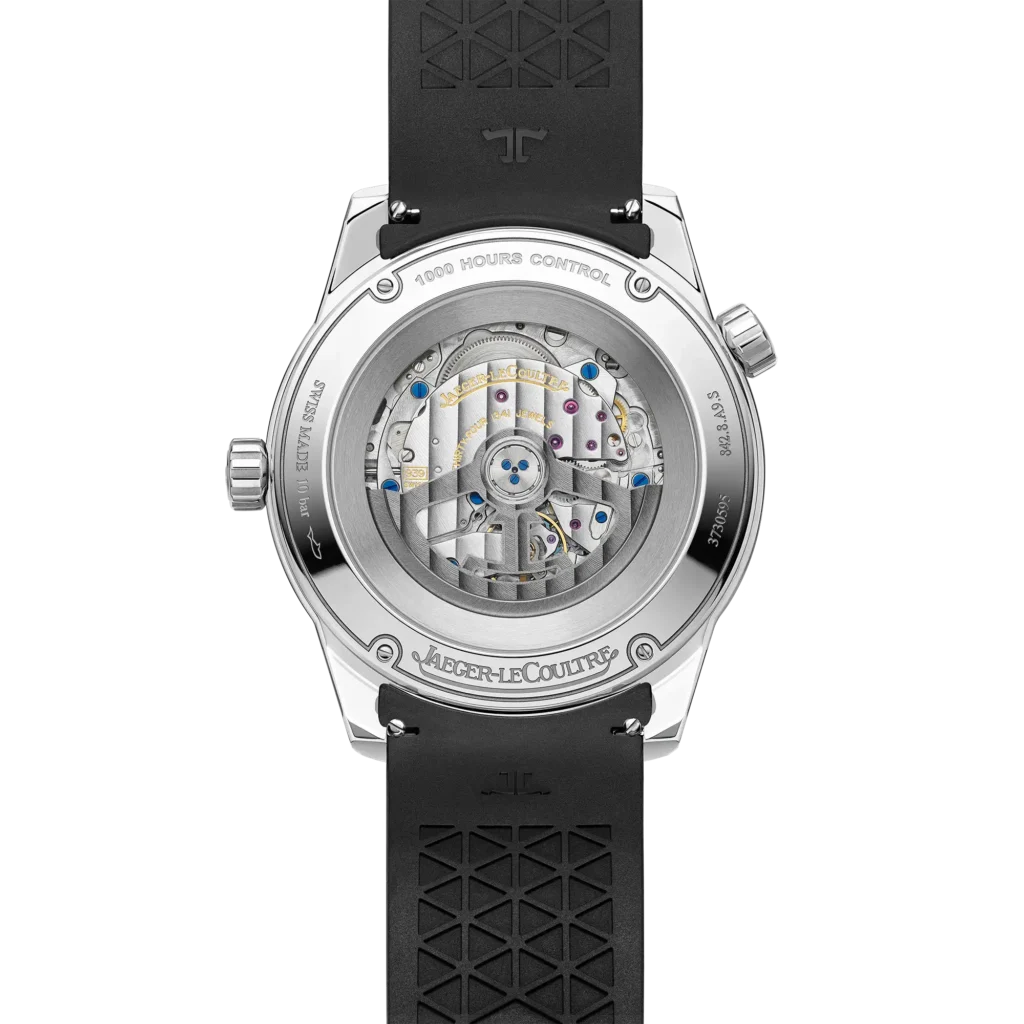
The steel case measures 42mm in diameter, and gets the trademark Polaris shape and finish of horizontal brushing. The thickness is kept in check at an impressively trim 11.5mm, even with a slightly domed sapphire crystal. The movement is visible through an exhibition caseback. The watch comes with two straps: a blue canvas material as well as a black rubber unit, each offering their own unique personality with the watch.
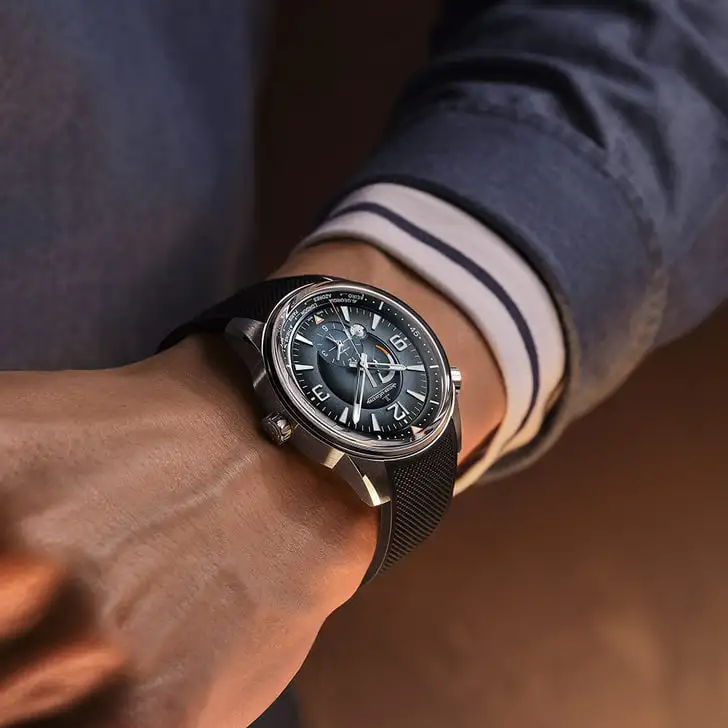
The Polaris Geographic is priced at $16,100, and is available now. We’ll have hands-on impressions of this watch coming soon. Jaeger-LeCoultre

